Guanghao Li
Dark-ISP: Enhancing RAW Image Processing for Low-Light Object Detection
Sep 11, 2025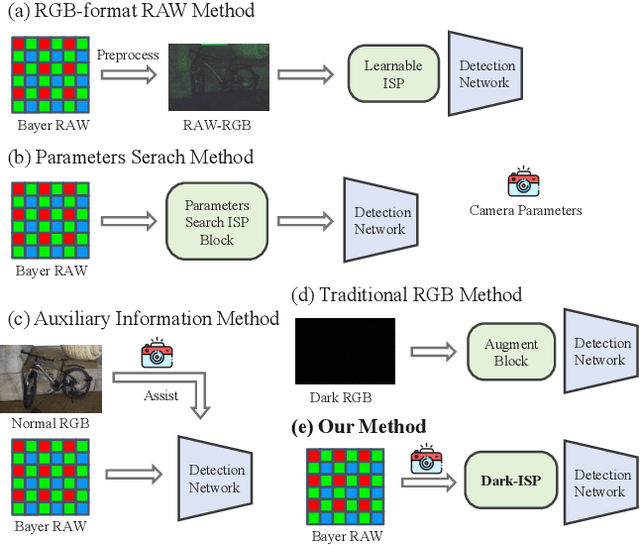
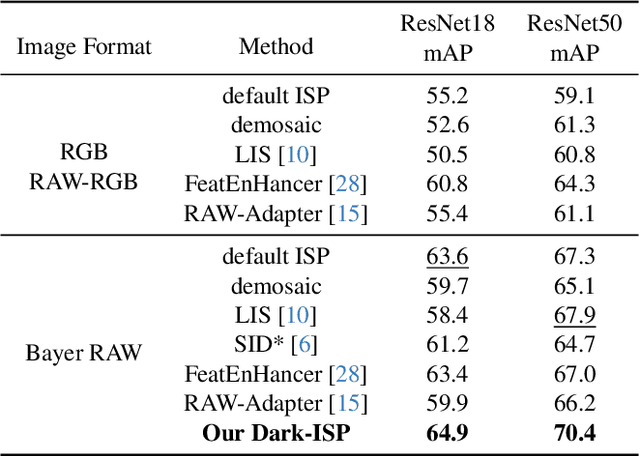
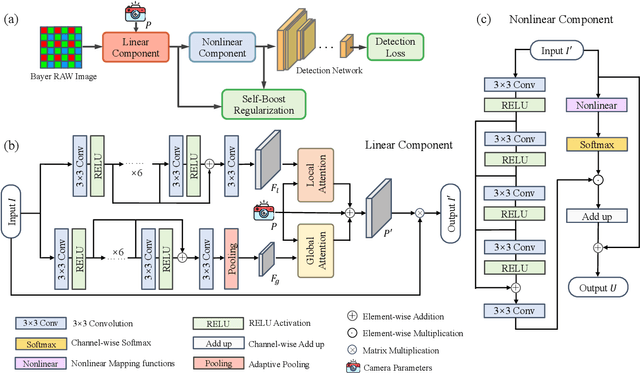
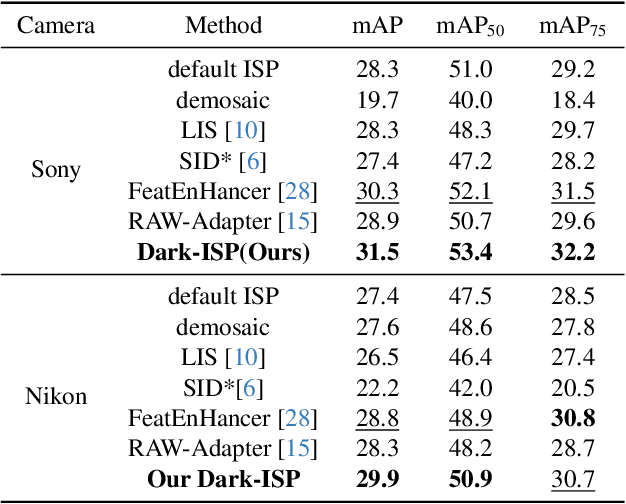
Abstract:Low-light Object detection is crucial for many real-world applications but remains challenging due to degraded image quality. While recent studies have shown that RAW images offer superior potential over RGB images, existing approaches either use RAW-RGB images with information loss or employ complex frameworks. To address these, we propose a lightweight and self-adaptive Image Signal Processing (ISP) plugin, Dark-ISP, which directly processes Bayer RAW images in dark environments, enabling seamless end-to-end training for object detection. Our key innovations are: (1) We deconstruct conventional ISP pipelines into sequential linear (sensor calibration) and nonlinear (tone mapping) sub-modules, recasting them as differentiable components optimized through task-driven losses. Each module is equipped with content-aware adaptability and physics-informed priors, enabling automatic RAW-to-RGB conversion aligned with detection objectives. (2) By exploiting the ISP pipeline's intrinsic cascade structure, we devise a Self-Boost mechanism that facilitates cooperation between sub-modules. Through extensive experiments on three RAW image datasets, we demonstrate that our method outperforms state-of-the-art RGB- and RAW-based detection approaches, achieving superior results with minimal parameters in challenging low-light environments.
* 11 pages, 6 figures, conference
SCOUT: Teaching Pre-trained Language Models to Enhance Reasoning via Flow Chain-of-Thought
May 30, 2025Abstract:Chain of Thought (CoT) prompting improves the reasoning performance of large language models (LLMs) by encouraging step by step thinking. However, CoT-based methods depend on intermediate reasoning steps, which limits scalability and generalization. Recent work explores recursive reasoning, where LLMs reuse internal layers across iterations to refine latent representations without explicit CoT supervision. While promising, these approaches often require costly pretraining and lack a principled framework for how reasoning should evolve across iterations. We address this gap by introducing Flow Chain of Thought (Flow CoT), a reasoning paradigm that models recursive inference as a progressive trajectory of latent cognitive states. Flow CoT frames each iteration as a distinct cognitive stage deepening reasoning across iterations without relying on manual supervision. To realize this, we propose SCOUT (Stepwise Cognitive Optimization Using Teachers), a lightweight fine tuning framework that enables Flow CoT style reasoning without the need for pretraining. SCOUT uses progressive distillation to align each iteration with a teacher of appropriate capacity, and a cross attention based retrospective module that integrates outputs from previous iterations while preserving the models original computation flow. Experiments across eight reasoning benchmarks show that SCOUT consistently improves both accuracy and explanation quality, achieving up to 1.8% gains under fine tuning. Qualitative analyses further reveal that SCOUT enables progressively deeper reasoning across iterations refining both belief formation and explanation granularity. These results not only validate the effectiveness of SCOUT, but also demonstrate the practical viability of Flow CoT as a scalable framework for enhancing reasoning in LLMs.
MIGA: Mutual Information-Guided Attack on Denoising Models for Semantic Manipulation
Mar 11, 2025Abstract:Deep learning-based denoising models have been widely employed in vision tasks, functioning as filters to eliminate noise while retaining crucial semantic information. Additionally, they play a vital role in defending against adversarial perturbations that threaten downstream tasks. However, these models can be intrinsically susceptible to adversarial attacks due to their dependence on specific noise assumptions. Existing attacks on denoising models mainly aim at deteriorating visual clarity while neglecting semantic manipulation, rendering them either easily detectable or limited in effectiveness. In this paper, we propose Mutual Information-Guided Attack (MIGA), the first method designed to directly attack deep denoising models by strategically disrupting their ability to preserve semantic content via adversarial perturbations. By minimizing the mutual information between the original and denoised images, a measure of semantic similarity. MIGA forces the denoiser to produce perceptually clean yet semantically altered outputs. While these images appear visually plausible, they encode systematically distorted semantics, revealing a fundamental vulnerability in denoising models. These distortions persist in denoised outputs and can be quantitatively assessed through downstream task performance. We propose new evaluation metrics and systematically assess MIGA on four denoising models across five datasets, demonstrating its consistent effectiveness in disrupting semantic fidelity. Our findings suggest that denoising models are not always robust and can introduce security risks in real-world applications.
Zero Token-Driven Deep Thinking in LLMs: Unlocking the Full Potential of Existing Parameters via Cyclic Refinement
Feb 17, 2025Abstract:Resource limitations often constrain the parameter counts of Large Language Models (LLMs), hindering their performance. While existing methods employ parameter sharing to reuse the same parameter set under fixed budgets, such approaches typically force each layer to assume multiple roles with a predetermined number of iterations, restricting efficiency and adaptability. In this work, we propose the Zero Token Transformer (ZTT), which features a head-tail decoupled parameter cycling method. We disentangle the first (head) and last (tail) layers from parameter cycling and iteratively refine only the intermediate layers. Furthermore, we introduce a Zero-Token Mechanism, an internal architectural component rather than an input token, to guide layer-specific computation. At each cycle, the model retrieves a zero token (with trainable key values) from a Zero-Token Pool, integrating it alongside regular tokens in the attention mechanism. The corresponding attention scores not only reflect each layer's computational importance but also enable dynamic early exits without sacrificing overall model accuracy. Our approach achieves superior performance under tight parameter budgets, effectively reduces computational overhead via early exits, and can be readily applied to fine-tune existing pre-trained models for enhanced efficiency and adaptability.
PAPL-SLAM: Principal Axis-Anchored Monocular Point-Line SLAM
Oct 16, 2024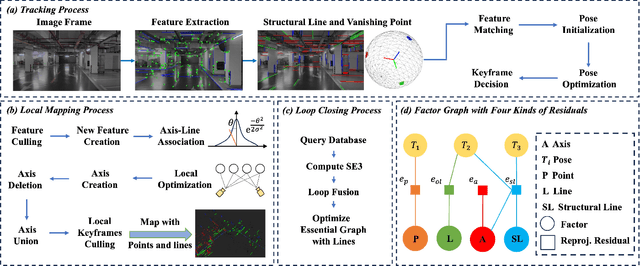



Abstract:In point-line SLAM systems, the utilization of line structural information and the optimization of lines are two significant problems. The former is usually addressed through structural regularities, while the latter typically involves using minimal parameter representations of lines in optimization. However, separating these two steps leads to the loss of constraint information to each other. We anchor lines with similar directions to a principal axis and optimize them with $n+2$ parameters for $n$ lines, solving both problems together. Our method considers scene structural information, which can be easily extended to different world hypotheses while significantly reducing the number of line parameters to be optimized, enabling rapid and accurate mapping and tracking. To further enhance the system's robustness and avoid mismatch, we have modeled the line-axis probabilistic data association and provided the algorithm for axis creation, updating, and optimization. Additionally, considering that most real-world scenes conform to the Atlanta World hypothesis, we provide a structural line detection strategy based on vertical priors and vanishing points. Experimental results and ablation studies on various indoor and outdoor datasets demonstrate the effectiveness of our system.
FLOPS: Forward Learning with OPtimal Sampling
Oct 08, 2024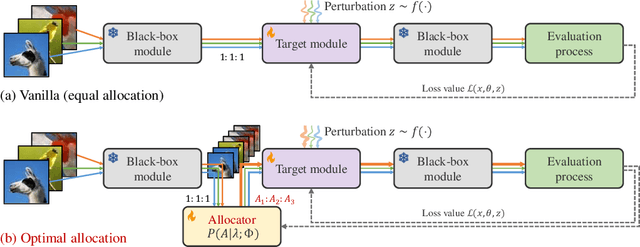
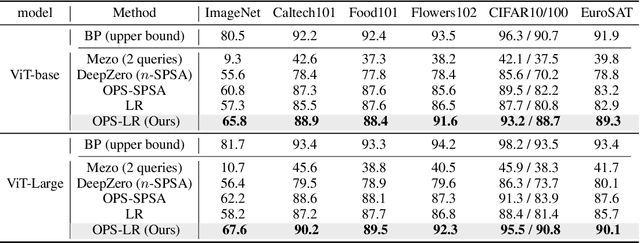
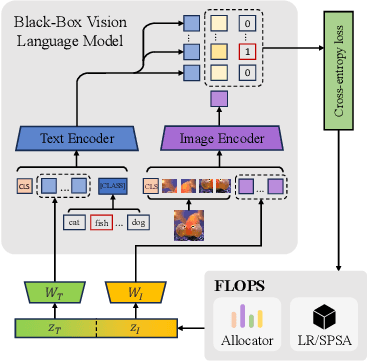
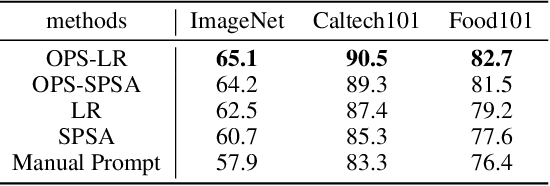
Abstract:Given the limitations of backpropagation, perturbation-based gradient computation methods have recently gained focus for learning with only forward passes, also referred to as queries. Conventional forward learning consumes enormous queries on each data point for accurate gradient estimation through Monte Carlo sampling, which hinders the scalability of those algorithms. However, not all data points deserve equal queries for gradient estimation. In this paper, we study the problem of improving the forward learning efficiency from a novel perspective: how to reduce the gradient estimation variance with minimum cost? For this, we propose to allocate the optimal number of queries over each data in one batch during training to achieve a good balance between estimation accuracy and computational efficiency. Specifically, with a simplified proxy objective and a reparameterization technique, we derive a novel plug-and-play query allocator with minimal parameters. Theoretical results are carried out to verify its optimality. We conduct extensive experiments for fine-tuning Vision Transformers on various datasets and further deploy the allocator to two black-box applications: prompt tuning and multimodal alignment for foundation models. All findings demonstrate that our proposed allocator significantly enhances the scalability of forward-learning algorithms, paving the way for real-world applications.
EC-SLAM: Real-time Dense Neural RGB-D SLAM System with Effectively Constrained Global Bundle Adjustment
Apr 20, 2024



Abstract:We introduce EC-SLAM, a real-time dense RGB-D simultaneous localization and mapping (SLAM) system utilizing Neural Radiance Fields (NeRF). Although recent NeRF-based SLAM systems have demonstrated encouraging outcomes, they have yet to completely leverage NeRF's capability to constrain pose optimization. By employing an effectively constrained global bundle adjustment (BA) strategy, our system makes use of NeRF's implicit loop closure correction capability. This improves the tracking accuracy by reinforcing the constraints on the keyframes that are most pertinent to the optimized current frame. In addition, by implementing a feature-based and uniform sampling strategy that minimizes the number of ineffective constraint points for pose optimization, we mitigate the effects of random sampling in NeRF. EC-SLAM utilizes sparse parametric encodings and the truncated signed distance field (TSDF) to represent the map in order to facilitate efficient fusion, resulting in reduced model parameters and accelerated convergence velocity. A comprehensive evaluation conducted on the Replica, ScanNet, and TUM datasets showcases cutting-edge performance, including enhanced reconstruction accuracy resulting from precise pose estimation, 21 Hz run time, and tracking precision improvements of up to 50\%. The source code is available at https://github.com/Lightingooo/EC-SLAM.
DFedADMM: Dual Constraints Controlled Model Inconsistency for Decentralized Federated Learning
Aug 16, 2023Abstract:To address the communication burden issues associated with federated learning (FL), decentralized federated learning (DFL) discards the central server and establishes a decentralized communication network, where each client communicates only with neighboring clients. However, existing DFL methods still suffer from two major challenges: local inconsistency and local heterogeneous overfitting, which have not been fundamentally addressed by existing DFL methods. To tackle these issues, we propose novel DFL algorithms, DFedADMM and its enhanced version DFedADMM-SAM, to enhance the performance of DFL. The DFedADMM algorithm employs primal-dual optimization (ADMM) by utilizing dual variables to control the model inconsistency raised from the decentralized heterogeneous data distributions. The DFedADMM-SAM algorithm further improves on DFedADMM by employing a Sharpness-Aware Minimization (SAM) optimizer, which uses gradient perturbations to generate locally flat models and searches for models with uniformly low loss values to mitigate local heterogeneous overfitting. Theoretically, we derive convergence rates of $\small \mathcal{O}\Big(\frac{1}{\sqrt{KT}}+\frac{1}{KT(1-\psi)^2}\Big)$ and $\small \mathcal{O}\Big(\frac{1}{\sqrt{KT}}+\frac{1}{KT(1-\psi)^2}+ \frac{1}{T^{3/2}K^{1/2}}\Big)$ in the non-convex setting for DFedADMM and DFedADMM-SAM, respectively, where $1 - \psi$ represents the spectral gap of the gossip matrix. Empirically, extensive experiments on MNIST, CIFAR10 and CIFAR100 datesets demonstrate that our algorithms exhibit superior performance in terms of both generalization and convergence speed compared to existing state-of-the-art (SOTA) optimizers in DFL.
Visual Prompt Based Personalized Federated Learning
Mar 15, 2023



Abstract:As a popular paradigm of distributed learning, personalized federated learning (PFL) allows personalized models to improve generalization ability and robustness by utilizing knowledge from all distributed clients. Most existing PFL algorithms tackle personalization in a model-centric way, such as personalized layer partition, model regularization, and model interpolation, which all fail to take into account the data characteristics of distributed clients. In this paper, we propose a novel PFL framework for image classification tasks, dubbed pFedPT, that leverages personalized visual prompts to implicitly represent local data distribution information of clients and provides that information to the aggregation model to help with classification tasks. Specifically, in each round of pFedPT training, each client generates a local personalized prompt related to local data distribution. Then, the local model is trained on the input composed of raw data and a visual prompt to learn the distribution information contained in the prompt. During model testing, the aggregated model obtains prior knowledge of the data distributions based on the prompts, which can be seen as an adaptive fine-tuning of the aggregation model to improve model performances on different clients. Furthermore, the visual prompt can be added as an orthogonal method to implement personalization on the client for existing FL methods to boost their performance. Experiments on the CIFAR10 and CIFAR100 datasets show that pFedPT outperforms several state-of-the-art (SOTA) PFL algorithms by a large margin in various settings.
Subspace based Federated Unlearning
Feb 24, 2023Abstract:Federated learning (FL) enables multiple clients to train a machine learning model collaboratively without exchanging their local data. Federated unlearning is an inverse FL process that aims to remove a specified target client's contribution in FL to satisfy the user's right to be forgotten. Most existing federated unlearning algorithms require the server to store the history of the parameter updates, which is not applicable in scenarios where the server storage resource is constrained. In this paper, we propose a simple-yet-effective subspace based federated unlearning method, dubbed SFU, that lets the global model perform gradient ascent in the orthogonal space of input gradient spaces formed by other clients to eliminate the target client's contribution without requiring additional storage. Specifically, the server first collects the gradients generated from the target client after performing gradient ascent, and the input representation matrix is computed locally by the remaining clients. We also design a differential privacy method to protect the privacy of the representation matrix. Then the server merges those representation matrices to get the input gradient subspace and updates the global model in the orthogonal subspace of the input gradient subspace to complete the forgetting task with minimal model performance degradation. Experiments on MNIST, CIFAR10, and CIFAR100 show that SFU outperforms several state-of-the-art (SOTA) federated unlearning algorithms by a large margin in various settings.
 Add to Chrome
Add to Chrome Add to Firefox
Add to Firefox Add to Edge
Add to Edge